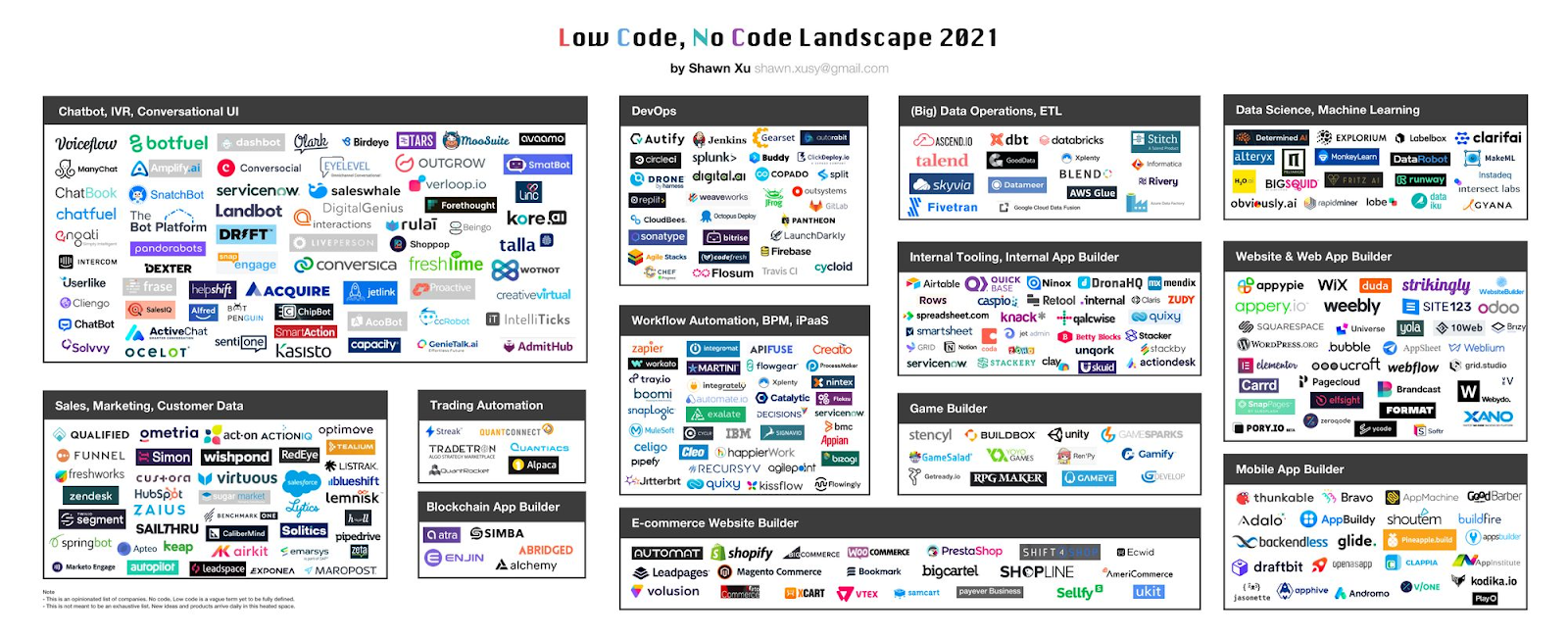
Low Code No Code, Part II: How to Ride This Wave
Today’s post is a guest contribution from Shawn Xu (no relations). Shawn is one of the early engineers at Ascend.io, got his Masters in Human Computer Interaction at Carnegie Mellon, and writes an informative WeChat public account on SaaS called 硅谷成长攻略.
In Part I of this two-part Low Code No Code series, I focused on the overall Low Code No Code (LCNC) landscape, major product categories, and a landscape graphic of more than 360 companies in the ecosystem.
In this Part II, I’ll share some thoughts on how you can ride this latest LCNC wave, a rubric for evaluating different LCNC products, and how LCNC is developing in China.
Imperative to Declarative Programming: Imperative programming is all about “commands”, while declarative programming describes the “end result.”
A good example would be telling some friends who are visiting you where your home is. In the imperative way, you’d say: “Get on Highway 101, exit at Fair Oaks Avenue, turn right at the post office, and second left after the 7-11.” It’s a list of commands that should get you the result you need, but doesn’t actually describe the result. In the declarative way, you’d simply declare the address of your home and offload the navigation to say Google Maps.





















